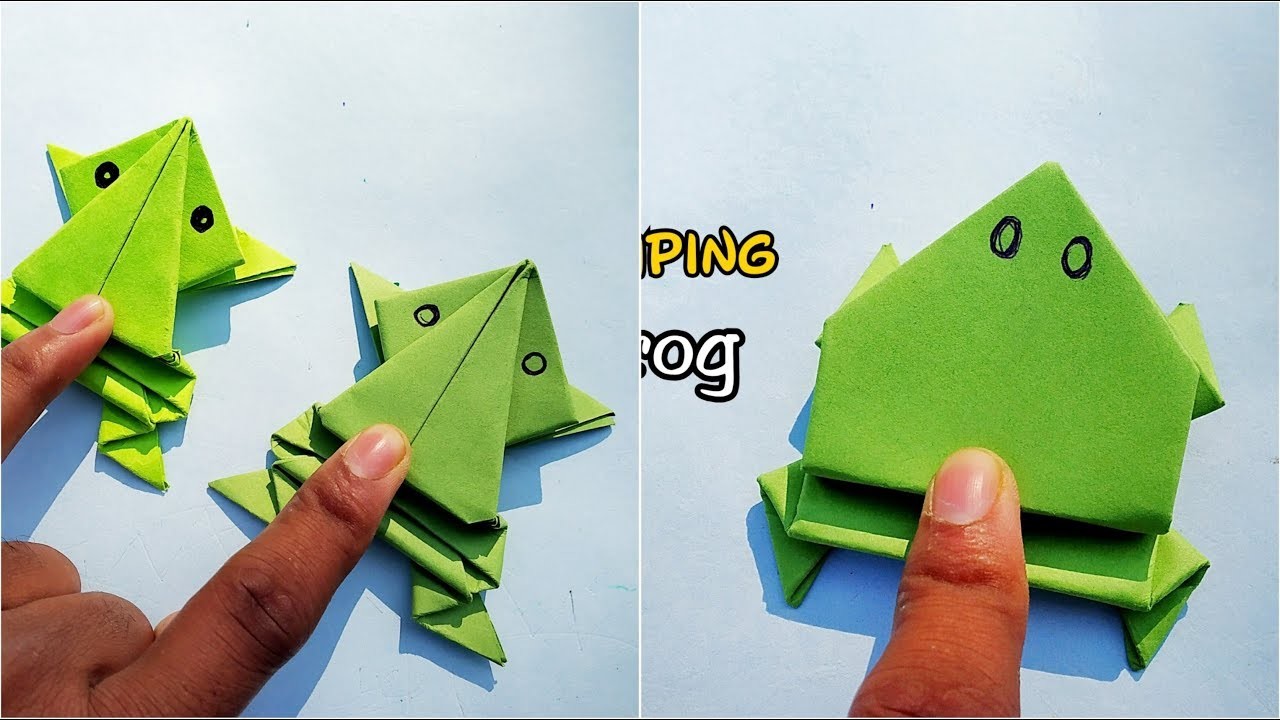
And because it is a traditional model I release it under a creative commons license. I used the vector graphics program inkscape to create these instructions for the frog. I really like this model so I took the time to make a diagram for it.
#Frog origami how to
Here is my howto-video on how to fold the jumping frog.

Once you practiced a little how to fold this jumping frog you will be able to fold it much quicker. So I can safely recommend it for beginners. In fact, it is the very first model I learned. You can also stretch this out over several weeks by holding one event each Friday, for example.The origami frog is a traditional model that is very easy. You can also eliminate some of the events. To speed up the lesson, fold the frogs for your students or just ask each to create one frog instead of a team of three. You can also do a more detailed analysis of the final results.įor remediation, you can use the video provided above so that students can go through the folding steps at their own pace.įor extension, you can also challenge them to fold additional frogs of their own design to see if they can improve upon their results or they can research other origami frogs online (there are a lot) to see if they can come up with a better model. For example, "How many jumps do you think it will take to reach the finish line?" and "How many jumps did it take to reach the finish line?" Or have students unfold a frog and count the shapes (How many triangles? How many rectangles?) are left by the folding lines.įor older students, you can discuss the physics behind the final folds - how will different folds change the jumping patterns. You can also change the measurement to more of a counting and/or estimation activity. Step 4: Analyze the data, complete analysis sheetsįor younger students, you can fold the frogs ahead of time, then just have them do the jumping and measurement. Step 2: Allow students time to fold/design their own frogs and to practice Usually, students will need to go through once slowly, then again with pictures more quickly in order to remember the entire process.Print or create bullseye/measuring tapes and secure to floors/wall.Frog folding vocabulary sheet ( Link, or see below) - print copies for students if desired.


Olympic presentation ( Link, or see below) - on teacher computer or print 1 copy.Frog folding presentation ( Link, or see below) - on teacher computer.Calculators (if allowed for mean, median, mode calculations or if doing more complicated analysis).Other: engineering, artistic design, explanatory writing Math: geometry vocabulary, spatial sense, basic fractions (1/2, 1/4), measurement, data analysis (mean, median, mode, range), estimation Tested with students in 5th, 7th/8th, and 11th grades. Fold origami frogs, then hold competitions to see which can jump the highest, the farthest, and the most accurately!


 0 kommentar(er)
0 kommentar(er)
